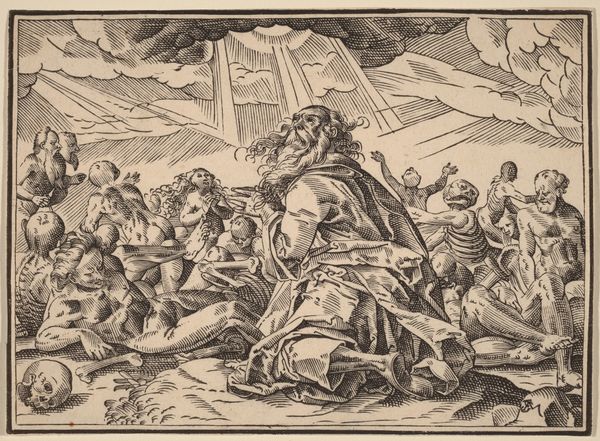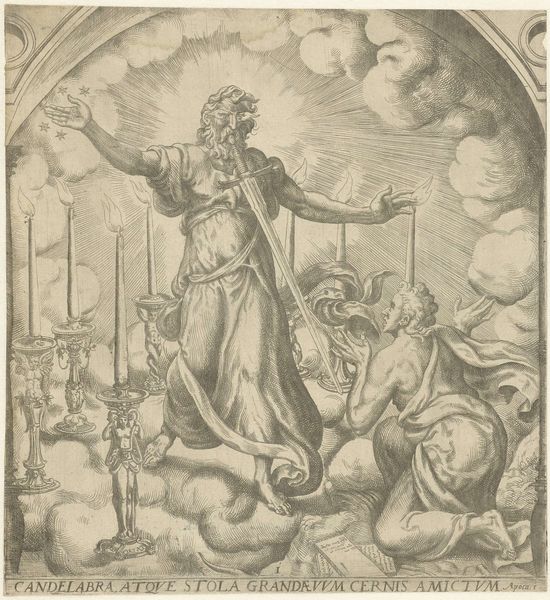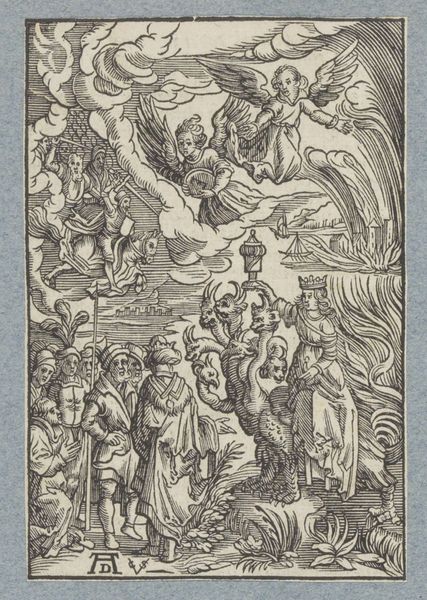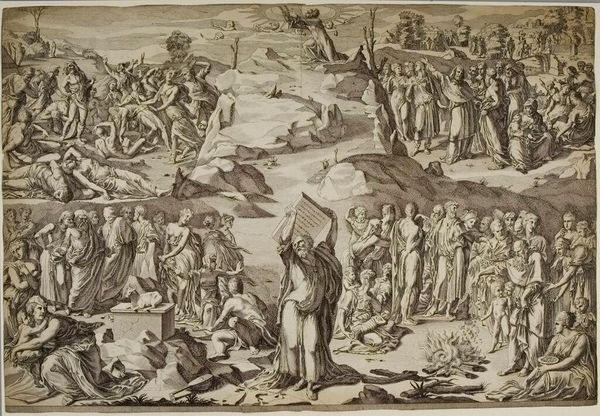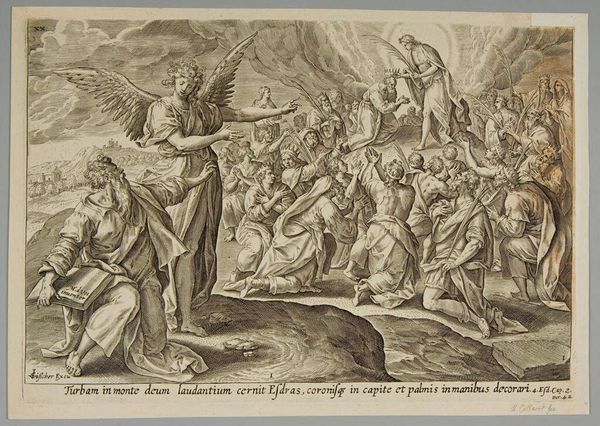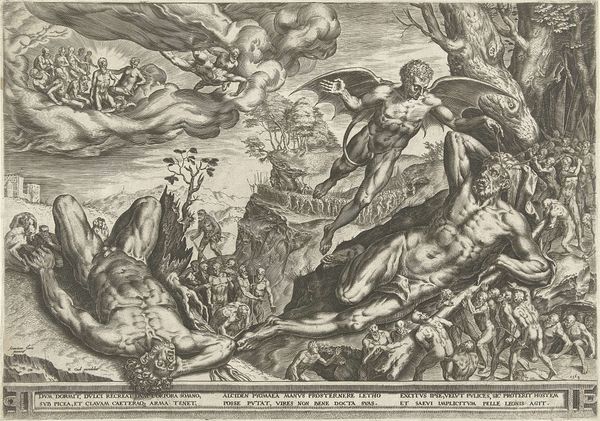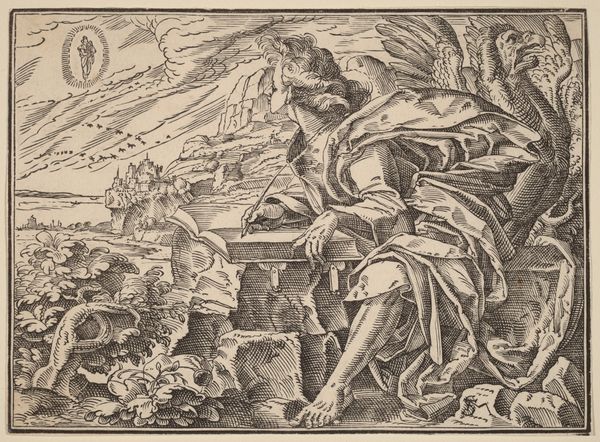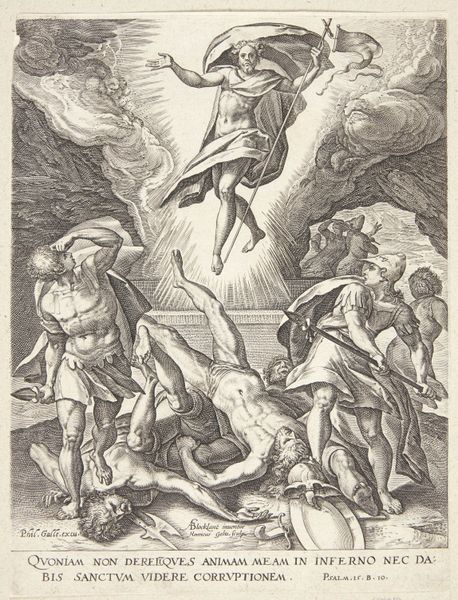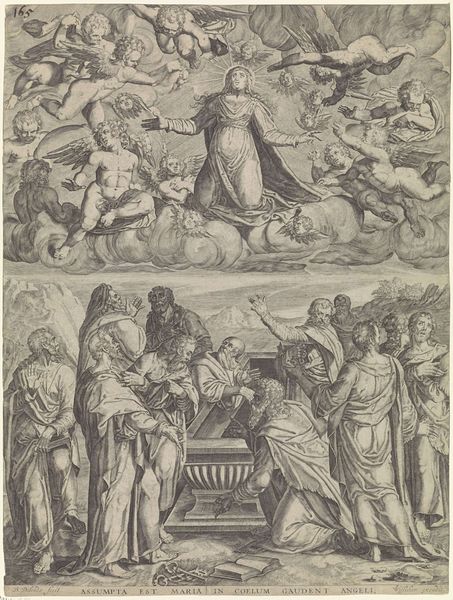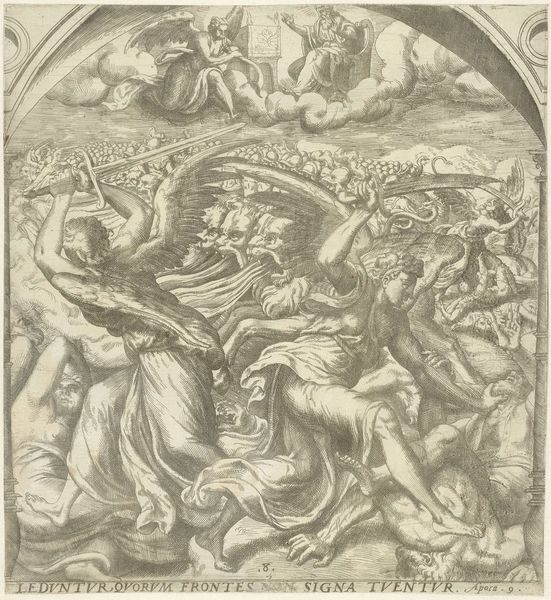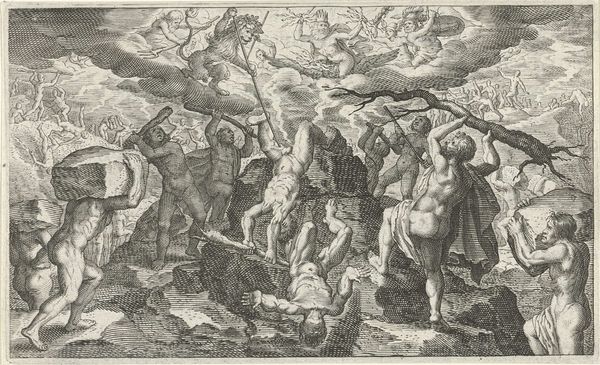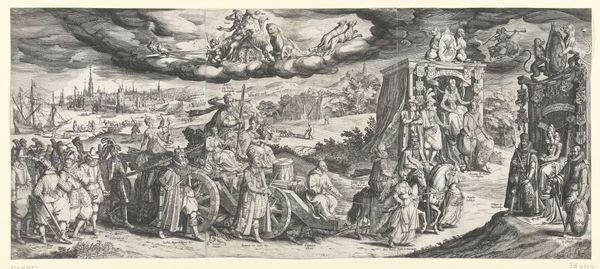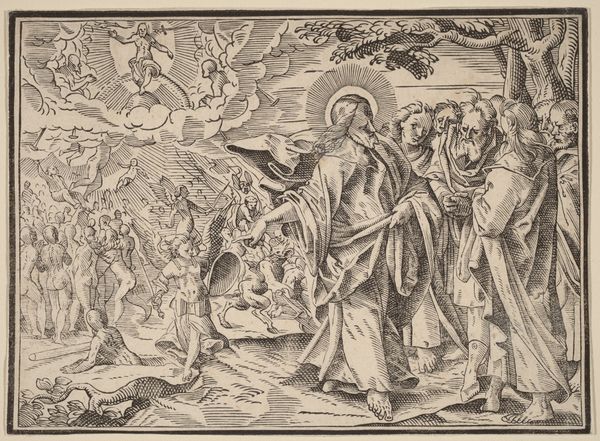
print, engraving
#
allegory
# print
#
mannerism
#
figuration
#
coloured pencil
#
history-painting
#
engraving
Dimensions: height 205 mm, width 234 mm, height 538 mm, width 380 mm
Copyright: Rijks Museum: Open Domain
Editor: This is "Vision of Ezekiel," an engraving by Johann Sadeler I from 1579. It's quite striking, depicting figures rising from the dead. It reminds me a bit of theater, a grand, slightly chaotic performance. How do you interpret this work? Curator: Looking at this piece from a materialist perspective, I’m drawn to consider the economic and social factors influencing its production and reception. Engravings, as a form of printmaking, allowed for the relatively mass production of images. How do you think that fact of mechanical reproduction might have impacted its dissemination and influence during that period? Editor: It's interesting to think about mass production for that time. I suppose it made art more accessible to a wider audience beyond the elite. But did this shift the perception of the artistic skill or value of the artwork? Curator: Exactly. The reproducibility challenges traditional notions of the unique "aura" of the artwork. But more than that, consider the copperplate itself - its cost, the skill required to work with the metal, the division of labor involved in the entire printmaking process from design to printing. How might the materials used, and the processes involved in making the artwork shaped its meaning? Editor: I guess the durability of the copperplate allowed for numerous copies, potentially generating profit. And skilled artisans could elevate printmaking to an esteemed craft, challenging rigid ideas about art-making? Curator: Precisely! And further still, note the presence of text integrated with the visual elements of the engraving. Textually rich works invite interpretation and understanding through literary sources. We must look closely at how material properties shape what the work expresses and accomplishes. Editor: I never thought about approaching it quite that way. Considering the printmaking process definitely adds another dimension. Thank you for sharing these perspectives! Curator: Likewise! It’s crucial to look at how works operate in material ways, reflecting complex production networks tied to the world at large.
Comments
No comments
Be the first to comment and join the conversation on the ultimate creative platform.
